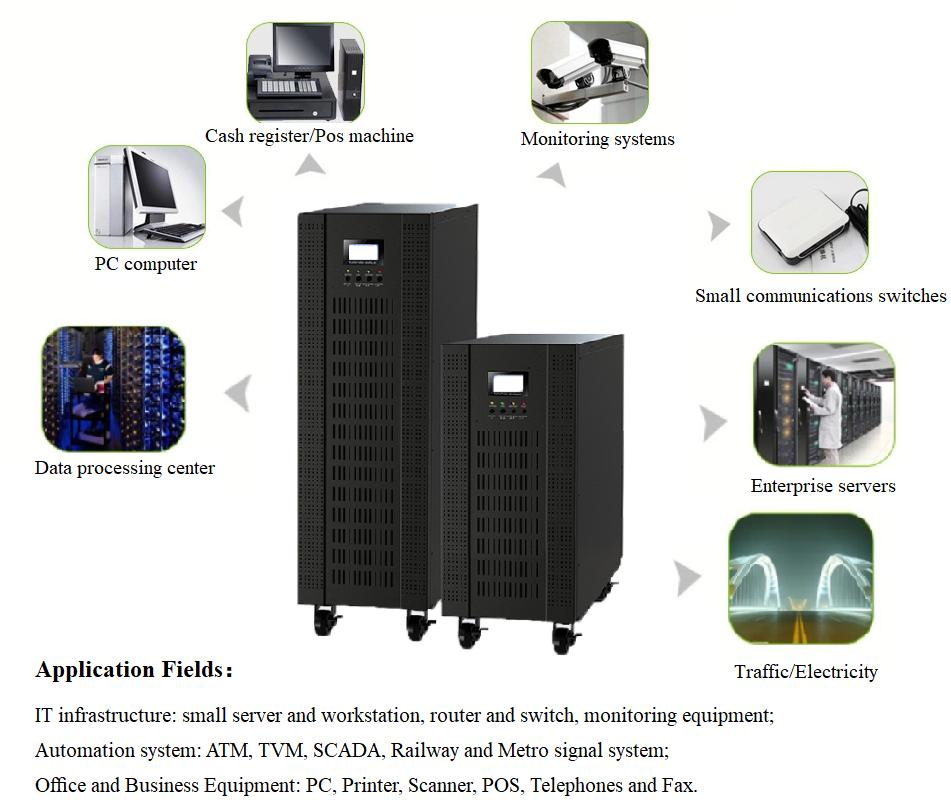The use of UPS power is becoming more and more widespread, when the mains input is normal, the UPS will supply the mains voltage after the load is used, at this time the UPS is an AC mains voltage regulator, and it also charges the battery in the machine; When the mains power is interrupted (an accident power failure), the UPS immediately supplies 220V AC power to the load through inverter conversion, ensuring the normal operation of the load and protecting the hardware and software of the load from damage.
Daily maintenance must be paid attention to during the use of the UPS power supply to give full play to its role and prolong its service life. Here is a brief introduction to the maintenance method of UPS uninterruptible power supply.
1. Pay attention to the environmental requirements of the UPS
The UPS must meet the following requirements: The UPS must be placed in a flat position and at a distance from the wall to facilitate ventilation and heat dissipation. Keep away from direct sunlight, pollution sources, and heat sources. Keep the room clean and at a normal temperature and humidity.
The most important factor that affects the life of batteries is the ambient temperature. Generally, the optimal ambient temperature required by battery manufacturers is between 20 and 25 ° C. Although the increase of temperature improves the discharge capacity of battery, the battery life is greatly shortened at the cost.
2. regular charge and discharge
The floating charging voltage and discharge voltage in the UPS power supply have been adjusted to the rated value when leaving the factory, and the size of the discharge current is increased with the increase of the load, the use of the load should be reasonably adjusted, such as the number of control microcomputer and other electronic equipment. The rated power of the device determines the size of the load. To ensure the service life of the UPS, do not run the device under full load for a long time. In general, the load cannot exceed 60% of the rated UPS load. Within this range, the battery’s discharge current will not over discharge.
UPS is connected to the mains for a long time. In the use environment where the power supply quality is high and the mains power failure rarely occurs, the battery will be in the floating charging state for a long time. Over time, the activity of chemical energy and electric energy conversion of the battery will be reduced, and the aging will be accelerated and the service life will be shortened. Therefore, generally every 2-3 months should be completely discharged once, discharge time can be determined according to the capacity and load size of the battery. After a full load discharge, charge for more than 8 hours according to regulations.
3. lightning protection
Lightning is the natural enemy of all electrical appliances. Generally, the UPS has good shielding function and must be grounded for protection. However, the power cables and communication cables must also be protected against lightning.
4. use the communication function
Most large and medium UPS are equipped with microcomputer communication and program control and other operational performance. By installing the corresponding software on the microcomputer and connecting the UPS through series/parallel ports, running the program, the microcomputer can be used to communicate with the UPS. Generally, it has the functions of information inquiry, parameter setting, timing setting, automatic shutdown and alarm. By querying information, you can obtain the mains input voltage, UPS output voltage, load utilization, battery capacity utilization, internal temperature, and mains frequency. By setting parameters, you can set the UPS basic features, battery life, and battery expiration alarm. Through these intelligent operations, it greatly facilitates the use and management of UPS power supply and battery.
5. the use of the process of maintenance
Before use, carefully study the instruction manual and operation manual, and strictly follow the correct operating procedures for starting and shutting down the UPS. It is forbidden to frequently turn on and off the UPS power, and it is forbidden to use the UPS over load. When the battery is used to protect the shutdown, it must be recharged before use.
6. Replace wasted/damaged batteries in time
Large and medium UPS power supply with the number of batteries, from 3 to 80, or more. These single batteries are connected to each other to form a battery pack to supply DC power to the UPS. In the continuous operation of the UPS, due to the difference in performance and quality, individual battery performance decline, storage capacity does not meet the requirements and damage is inevitable.
If one or more batteries in the battery string are damaged, check and test each battery to remove the damaged battery. When replacing a new battery, purchase the battery of the same model from the same manufacturer. Do not mix acid-proof batteries, sealed batteries, or batteries of different specifications.
Post time: Oct-09-2022






